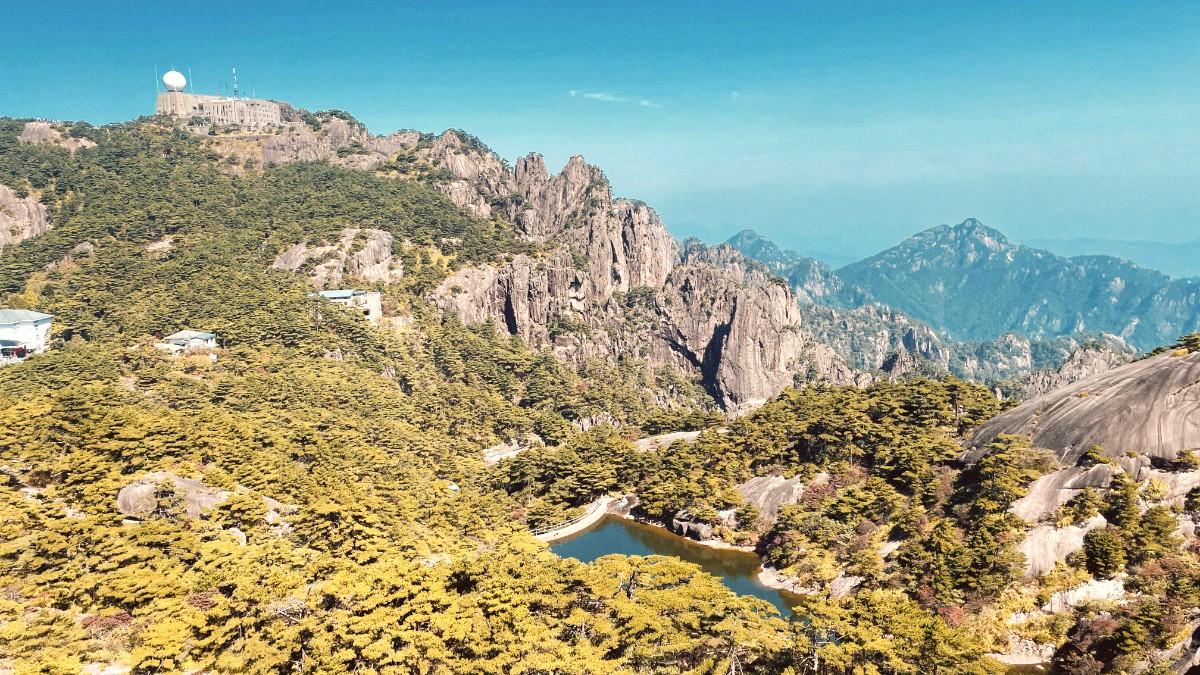
Anhui, China
This is Huangshan, a place where nature's artistry unfolds in dramatic scale, inspiring poets, artists, and travelers for centuries. Here, every vista invites contemplation, a journey not just through a landscape, but through a timeless realm of beauty.
Huangshan, also known as Yellow Mountain, is an UNESCO World Heritage Site in southern Anhui province, eastern China.
Its natural beauty, steeped in history and legend, continually captivates visitors worldwide.
Huangshan is a mountain range in southern Anhui province, nestled within eastern China. This UNESCO World Heritage Site draws travelers globally, eager to experience its unique geology and scenery. Huangshan City, also known as Tunxi, serves as the main entry point for visitors. The mountain range itself extends approximately 40 kilometers from north to south and 30 kilometers from east to west.
The mountain's geological makeup is mainly granite, shaped over millions of years by glacial erosion and weathering. This process created the distinct formations of Huangshan's peaks, including their sharp, vertical cliffs and deep valleys. The unique climate, characterized by high humidity and frequent cloud cover, fosters the peculiar pines that grow directly from the rock, creating the famous "sea of clouds" phenomenon. Rivers like the Xin'a River flow through the region, adding to the picturesque valleys.
Millions of years of erosion carved the distinct peaks and valleys.
High humidity and frequent cloud cover contribute to special pines and the "sea of clouds."
A scenic river flowing through the region, adding to the landscape.
Also known as Tunxi, the main entry point for visitors.
The mountain range extends 30 kilometers from east to west.
The combination of its geological features, specific climate, and rich vegetation makes Huangshan a natural wonder, visually striking in every season.
Huangshan's landscape, with its peculiar pines growing from rock and ethereal mists, reflects nature's artistry.
The region's geography influences local life, with agriculture, tea cultivation, and tourism as main industries.
The geological and climatic conditions create an unique ecosystem.
Huangshan possesses a history rich with human activity and artistic inspiration, stretching back millennia. Its current name, "Yellow Mountain," came into being in 747 AD by imperial decree.
This renaming honored the legendary Yellow Emperor, Huang Di, a revered figure in Chinese mythology. Legends say he made elixirs of immortality on the mountain, achieving enlightenment here. This connection to a foundational figure of Chinese civilization cemented Huangshan's place as a spiritual and cultural landmark.
Huangshan's landscapes inspire traditional Chinese landscape painting (shanshui) for centuries.
Poets like Li Bai and Xu Xiake composed verses celebrating Huangshan's majestic views.
Buddhist temples and ancient pathways mark centuries of pilgrimage and reverence.
The "Four Wonders" of Huangshan—peculiar pines, grotesque rocks, sea of clouds, and hot springs—became recurring themes in artistic works, influencing generations of aesthetic expression.
Dramatic granite peaks, unique pine trees, and frequent "sea of clouds" phenomena characterize the area. Waterfalls and hot springs add to its diverse appeal.
The Huizhou region showcases distinct cultural heritage. Well-preserved ancient villages like Hongcun and Xidi feature traditional architecture and intricate carvings.
Hiking the mountain is the main activity. Day trips to surrounding ancient villages offer cultural insights. Tea tasting and local culinary experiences round out the visit.
Experience the local culinary traditions, known for their unique flavors and fresh ingredients.
Participate in tea tasting, a significant part of the region's heritage, especially the famous Huangshan Maofeng tea.
Discover traditional handicrafts and artisan workshops in the ancient villages and Tunxi Ancient Street.